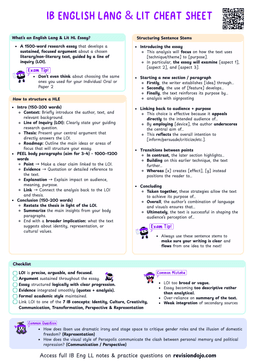You're A Writer Too.
- You're not just analyzing a writer, you are one.
- Just like authors layer techniques to shape meaning, you must structure your analysis to guide your reader.
- Every sentence should have purpose.
- Every paragraph should build meaning.
Examiners look for:
- Transitions that connect ideas
- Thematic links that stay focused
- Logical ordering that builds a clear argument
Transitions Are Bridges Between Ideas
Transitions
Words or phrases that guide the reader from one idea to the next.
- They can be used to:
- Add a point: "Moreover, the use of imagery reinforces the theme of isolation."
- Contrast ideas: "In contrast, the second stanza introduces a sense of hope."
- Show cause and effect : "As a result, the reader is left with a sense of unease."
Common Transitions
| Function | Example |
|---|---|
| Add a point | Moreover, In addition, Also |
| Contrast | However, In contrast, On the other hand |
| Cause and effect | Therefore, As a result, This leads to... |
| Build / develop | Building on this, This is reinforced by... |
| Conclude / reflect | Ultimately, This suggests, This reinforces... |
| Without Transition | With Transition |
|---|---|
| “The poet uses repetition to create a tense mood. The shift to second-person address intensifies reader involvement.” | “Building on the tense mood created by the repetition, the shift to second-person address then intensifies reader involvement.” |
Building on the tense mood created by the echo, the shift to second-person address intensifies the reader’s emotional involvement.”
- One idea flows naturally into the next.
- Feels like a real argument, not a bullet-point list.
Thematic Links Tie Back to the Central Argument
- Thematic links remind your reader your analysis serves a purpose.
- Every point you make should connect back to a central idea, theme, or thesis.


